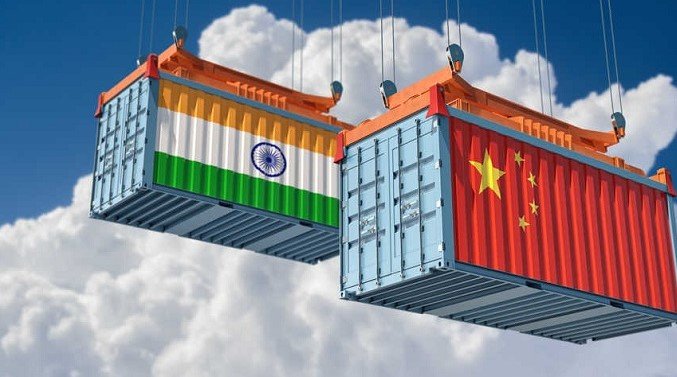India has slapped fresh anti-dumping duties on four key chemicals—three of them from China—in a bid to curb cheap imports and support domestic producers. The move comes amid rising trade tensions and a deepening deficit with its largest import partner.
It’s not the first time New Delhi’s taken this route, but the timing—and scale—says a lot about what’s brewing beneath the surface of India’s import policy.
Chemicals Under the Scanner: What’s Targeted and Why It Matters
India’s Directorate General of Trade Remedies (DGTR) has been busy this month. After completing separate investigations, the agency concluded that four chemicals—PEDA, Acetonitrile, Vitamin-A Palmitate, and Insoluble Sulphur—were being dumped into Indian markets at unfair prices.
The finance ministry didn’t wait around.
-
On PEDA (used in herbicides), anti-dumping duties now range from $1,305.6 to $2,017.9 per tonne.
-
Acetonitrile (vital to pharma firms) will attract up to $481 per tonne from China, Russia, and Taiwan.
-
Vitamin-A Palmitate, a food and pharmaceutical additive, now carries duties up to $20.87 per kg.
-
Insoluble Sulphur, used widely in the tyre industry, is now costlier with up to $358 per tonne slapped on imports from China and Japan.
These new tariffs, effective for five years, are aimed at restoring fair market conditions. But for local players long bruised by dumped imports, it’s more like a lifeline.

Behind the Curtain: Rising Trade Friction with Beijing
This isn’t happening in a vacuum. The India-China trade story has grown lopsided over the years.
In 2024-25, India’s imports from China hit $113.45 billion—a jump of over 11% from the year before. Meanwhile, exports to China fell by nearly 15%, bringing total bilateral trade to $127.7 billion. The result? A ballooning $99.2 billion trade deficit.
Now, that’s no small number.
India has been walking a tightrope—keeping trade flowing while trying to reduce overdependence on one country. These anti-dumping duties reflect a deeper rethink.
Pressure From Within: Industry Voices Getting Louder
For many Indian chemical manufacturers, this was long overdue. Several complained for months that dumped products were wiping out margins, slowing capex plans, and forcing layoffs.
PEDA, for instance, is essential in agrochemicals. Companies said cheap Chinese PEDA was being sold below production cost, making it impossible to compete.
Acetonitrile, on the other hand, is used in drug formulation and diagnostics. The pharma sector saw local producers squeezed out as Chinese exporters undercut prices by 20-40%.
Then there’s Vitamin-A Palmitate. It sounds niche, but it’s used in everything from food fortification to skincare. And with prices crashing due to aggressive overseas supply, Indian manufacturers were barely staying afloat.
Here’s what the DGTR investigations revealed:
| Product | Source Countries | Dumping Margin Estimate | Duty Range |
|---|---|---|---|
| PEDA | China | 65–78% | $1,305.6–$2,017.9/tonne |
| Acetonitrile | China, Russia, Taiwan | 30–42% | Up to $481/tonne |
| Vitamin-A Palmitate | China, EU, Switzerland | 18–27% | Up to $20.87/kg |
| Insoluble Sulphur | China, Japan | 23–35% | Up to $358/tonne |
WTO Rules, But India’s Playing Firm
Anti-dumping duties are WTO-sanctioned tools. Every member country is entitled to slap them on if there’s enough proof that dumping is harming domestic industries. And that’s exactly what India has done.
But there’s a political tone here too—especially considering India’s uneasy relations with China after the Galwan clash in 2020. Since then, India has cracked down on Chinese apps, reviewed FDI rules, and tightened tech sourcing.
These tariffs now fall into a larger playbook.
Also, it’s not just about China. Russia, Taiwan, Japan, and parts of the EU are affected too—though the bulk of the action still points squarely east.
The Five-Year Clock Starts Now
As per the Central Board of Indirect Taxes and Customs, the newly imposed duties will stay in place for five years. That’s a long window for Indian producers to breathe.
Some market watchers argue it’s too long. Others say five years barely scratches the surface when rebuilding an industry.
For now, manufacturers are relieved. One Gujarat-based acetone producer told CNBC-TV18 off the record: “We’ve been bleeding. This gives us a shot at survival.”
But how much difference it really makes will depend on how enforcement holds up.
Bigger Picture: Can India Cut the China Cord?
It’s one thing to impose duties. It’s another to reduce dependence.
Despite years of Atmanirbhar Bharat rhetoric and PLI schemes, China remains a top source for active pharmaceutical ingredients (APIs), electronics, solar components, and now—chemicals.
Acetonitrile is a good case. India does produce it, but scaling up quickly without compromising quality is another beast. For some ingredients, like Vitamin-A derivatives, domestic capacity is patchy at best.
There’s also this: many Indian pharma companies themselves import these chemicals because of cost. Now with duties, they’ll face higher input prices unless local production ramps up fast.
That’s the trade-off New Delhi’s betting on.
What Lies Ahead
This probably won’t be the last of such duties. Officials in the Commerce Ministry have hinted that more probes are underway.
A senior official told reporters anonymously, “We’re watching other segments too. Where there’s unfair dumping, we’ll respond.”
Basically, expect more fireworks in the coming months.
